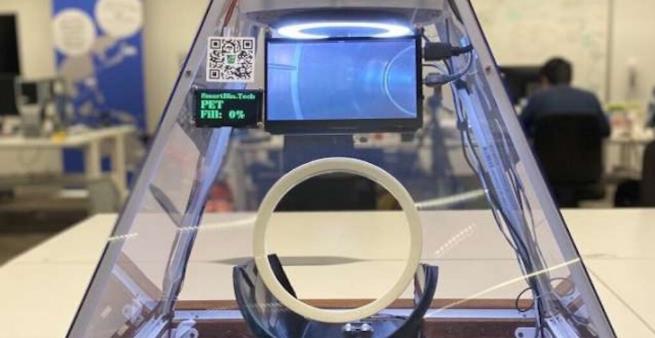What does the intelligent garbage can look like: not only can distinguish metal plastic glass, but also can turn waste into treasure
According to Tech Xplore, Australia's national science agency CSIRO and the University of Technology Sydney have collaborated to develop a prototype of a smart bin (Smart Bin).

Smart Bin uses the Internet of Things, sensors, artificial intelligence, infrared spectroscopy, machine learning and other technologies to automatically classify different waste such as metal, plastic and glass. Smart trash cans can also transform waste into usable resources. Smart bins aim to increase waste recycling rates and reduce waste pollution.
CSIRO Principal Research Scientist Wei Ni said: "The smart bin is highly practical, it can effectively increase the recycling rate and its use is simple. It can be placed in shopping malls, schools, cinemas, cafes and airports, among other places."
CSIRO CEO Dr. Larry Marshall said that in New South Wales, Australia's most populous state, for example, the state produces 800,000 tons of plastic waste each year, of which only 10 percent is recycled and the rest goes into landfills. To tackle the plastic waste problem, CSIRO has launched the End Plastic Waste Mission, which aims to reduce plastic waste in the Australian environment by 80 percent by 2030. Reduce plastic waste entering the Australian environment by 80%.
Dr Marshall added: "Science can transform our economy into a Circular Economy through the use of waste, the creation of higher paying jobs and the advancement of new technologies in Australia. Science not only drives the economy, it also protects our environment."
CSIRO's Circular Economy Roadmap 2021 states that circular economy innovation can triple the number of jobs in the circular economy by designing new products, new materials and adopting new business models that enable resource recovery. If Australia's economic recovery were to increase by 5 percent, the circular economy would add $1 billion to GDP.
Conclusion: Australia's commitment to the circular economy
Smart bins are one of the new products CSIRO is showcasing during Australia's National Science Week, using waste recycling technology that could contribute to Australia's circular economy.
Official Australian data reports that in 2020, Australia will produce 74.1 million tons of waste per year, or 2.94 tons per person. To address the waste produced, the Australian government is committed to increasing the recycling rate and developing a circular economy. Information shows that in 2020, the recycling rate of Australian tons of waste reached 60%.
Australia used to rely on waste exports to divert waste, but in recent years, as environmental awareness has increased, countries have stopped importing Australian waste. Australia is now looking for ways to recycle and dispose of its waste in the country, developing recycling technologies and promoting a circular economy. It seems that Australia still has a long way to go in this regard.
OTHER NEWS
-
- AR contact lenses are here, the price of a cell phone, officially opened the human wear test
- By 23 Aug,2022

-
- 1200x more efficient, MIT develops new model for AI drug making
- By 18 Jul,2022

-
- Meta AI bot trolls CEO Zuckerberg: so rich and always wearing the same clothes
- By 9 Aug,2022

-
- The world's largest: LG's 97-inch OLED TV opens for pre-order, priced at over $200,000
- By 15 Sep,2022

-
- Zuckerberg donates PyTorch to the Linux Foundation
- By 14 Sep,2022

-
- The non-technical AI guy is on fire: He doesn't have an ML degree, but he got an offer from DeepMind
- By 9 Aug,2022
